Luxury wool like cashmere and alpaca provides the ultimate warmth and softness. Wearing a sweater made from either of these rare yarn feels like wrapping yourself in a heated cloud. If you’re in the market for a high-end sweater, you’re probably wondering, cashmere vs alpaca: what’s the difference?
The main difference between alpaca and cashmere is that cashmere delivers more softness, while alpaca provides greater insulation and durability. Both types of wool are considered luxury items. Cashmere comes from the undercoat of Kashmir goats, while alpaca wool comes from Peruvian alpacas.
In this article, you’ll learn the key similarities and differences between cashmere and alpaca. You’ll also find out how much each yarn costs. Finally, you’ll get a comparison of the pros and cons of each kind of wool.
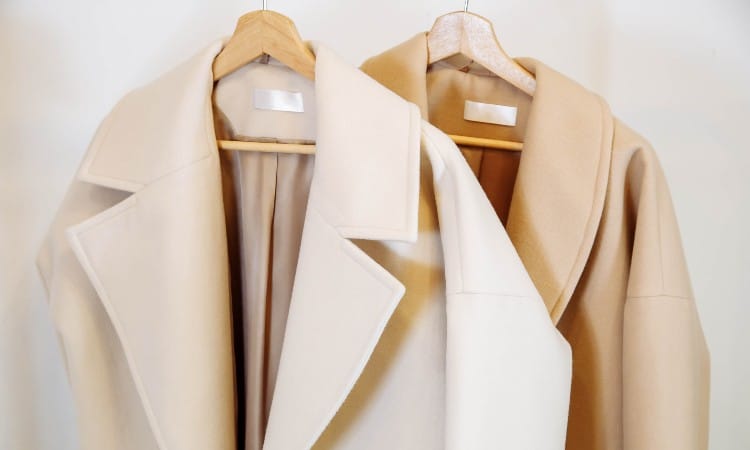
Cashmere Vs Alpaca: Key Points
Alpaca and cashmere have many similarities. For instance, they’re both super soft and warm, extremely expensive, and used by fashion designers for elite clothing brands!
However, they do have unique qualities as well. Here’s a breakdown of some of the key characteristics of each type of wool.
- Warmth: Both types of luxury wool provide immense warmth. That said, alpaca wool is a hair warmer.
- Insulation: Alpaca wool offers slightly improved insulation.
- Softness: Cashmere rules as the softest of all wools, though alpaca wool also feels amazingly cuddly!
- Durability: Alpaca has tougher, longer hairs that last longer than cashmere.
- Cost: Neither kind of wool comes cheap, but cashmere typically costs a bit more.
- Common Uses: Both types of wool feature in luxury sweaters, soft socks, and silky blankets.
What is Cashmere?
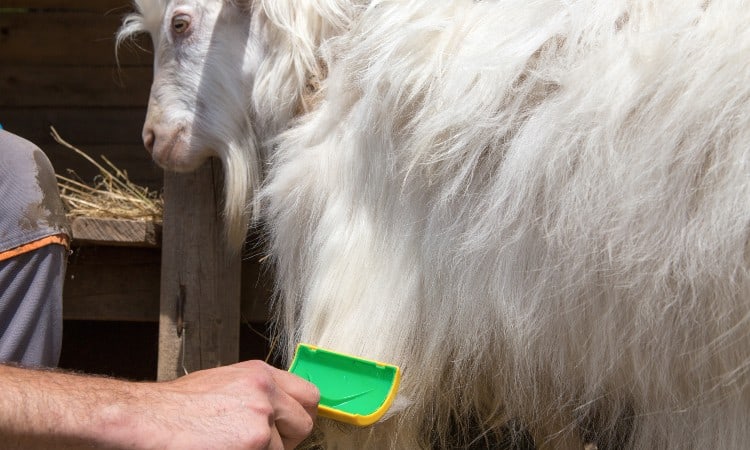
Cashmere comes from the soft undercoat of Hircus or “Kashmir” goats indigenous to Tibet, Mongolia, and some portions of Afghanistan and India. It takes a lot of wool from many of these special goats to create a cashmere product, making this expensive material a luxury item.
Today, most of the world’s supply of cashmere comes from the Gobi desert in China and Mongolia. Harvesting the wool requires many workers to physically comb the under hair from the goats. Generally, this happens during the warm spring months as the goats begin to shed their winter coats.
After this, the loose wool goes to a special facility for cleaning and sorting. Finally, it gets shipped worldwide to various manufacturers who turn it into yarn, sweaters, and socks!
This complex, time-consuming process means that only a limited supply of cashmere can be sold each year. Cashmere wool sales equal less than two percent of the amount of sheep wool sold in a year!
However, some manufacturers have started to add cheaper fiber as filler in their “cashmere” products in recent decades. This mainstream version of cashmere lowers the quality of the material significantly but also makes it available at affordable prices.
So how do you know if a product features true luxury cashmere? Of course, you can always check the manufacturer’s label. Don’t settle for anything less than 100% pure cashmere!
You can also find out how many threads are twisted together into each yarn, giving the material greater softness. The “ply” of a yarn refers to how many threads twist together to make the strand. Two ply and above usually means excellent quality, but you should not settle for 1-ply yarn, as it will have lower quality.
Just in case, you should also perform a few more tests.
First, run your hand over the surface of the material to see if any loose hair pills or sheds. True luxury cashmere comes from hairs combed out of shedding goats. If the goat handler took a shortcut and sheared the goats instead, the hairs in the yarn will be much shorter and prone to pilling.
Second, look for a loose weave. If you can see through gaps in the yarn, the product probably has cheap construction and won’t hold up well. Ideally, luxury cashmere items have a close weave.
As a final test, check the price tag! Most pure cashmere goes to couture designers who sell sweaters for prices around $1,000. If you find a cashmere item selling for under $200, it probably isn’t pure cashmere!
What is Alpaca Wool?
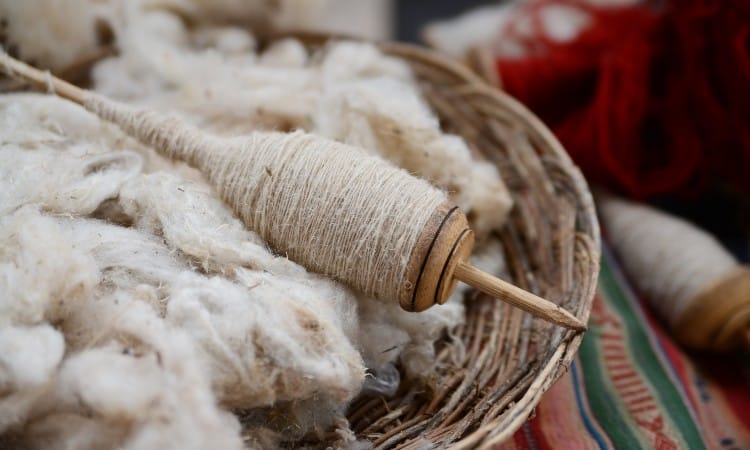
Alpaca fleece comes from alpacas, a member of the camel family native to South America. In more recent decades, these fun animals have migrated around the world as people adopt these sweet, friendly animals as pets. That said, almost all alpaca fleece still comes fairly exclusively from Peru.
Alpacas naturally have super thick, shaggy coats that protect them from extreme temperatures in the mountains of South America. It wouldn’t be an exaggeration to claim that this wool is the warmest kind of fleece in the world. Its fibers contain tiny air pockets that add extra insulation on top of the already soft and warm nature of any yarn!
To harvest this wool, farmers use a shearing process very similar to sheep shearing. Two or three people hang onto the alpaca while another person uses special shears to cut away the alpaca’s entire coat all in one piece! This labor-intensive process only takes place once a year since it takes that long for an alpaca to grow its coat to the desired length of five to ten inches.
After the shearing, the fleece requires hand carding, spinning into yarn, and washing. Once all of that is done, the farmer sends it off to a manufacturer or designer, who turns it into clothing, blankets, or other luxury items!
Besides the time and labor involved in this process, the rarity of alpacas makes the fleece more expensive. You will also see differences in price depending on what breed of alpaca the wool came from and whether or not it was harvested in Peru.
The most expensive type of alpaca wool comes from Suri alpacas in Peru. You can also look for a description of “baby alpaca” if you want the highest quality wool. This means the softest, newest fleece from an alpaca’s coat. It doesn’t mean the wool came from a baby alpaca!
Plain alpaca yarn typically costs up to $150 per pound. Clothing like scarves and sweaters costs a lot if the product truly contains 100% pure alpaca wool. You can expect to pay at least $100 for an alpaca scarf, for example!
Cashmere Vs Alpaca: What’s the Difference?
The biggest difference between alpaca and cashmere wool is that alpaca wool generally ranks slightly warmer than cashmere, while cashmere has slightly finer, softer fibers. Both kinds of wool cost a lot to manufacture, though pure cashmere typically costs a bit more.
You can’t necessarily make a blanket statement that one kind of wool is better than another. That said, each wool has its unique characteristics. Take a look at how each wool compares for key characteristics like warmth, sustainability, and durability.
Warmth
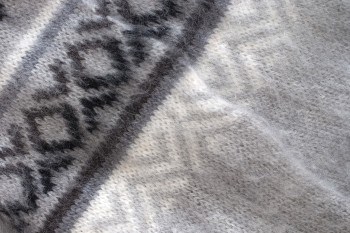 While cashmere has a deep, soft warmth to it, alpaca wool provides the greatest warmth. As with any yarn product, this depends in part on the construction of the garment or blanket, though.
While cashmere has a deep, soft warmth to it, alpaca wool provides the greatest warmth. As with any yarn product, this depends in part on the construction of the garment or blanket, though.
Cashmere has very fine fibers and a light, almost silky texture. It doesn’t need a thick pile or heavy weave to provide extreme warmth!
This is because it comes from the under the hair of goats who live in an extreme climate. Just like birds that have a layer of down beneath their flight feathers, these goats have both an insulating, super-soft undercoat and a heavy, rough overcoat to protect themselves from the weather.
So what makes alpaca wool even warmer? It often has more of a fluffy, fleecy quality because some kinds of alpacas produce slightly crimped hairs! These make excellent fluffy yarn for sweaters. What makes alpaca wool uniquely warm, though, is its insulating ability.
Insulation
Alpaca wool provides more insulation than cashmere. Its fibers have hollow air pockets trapped inside them. These pockets also trap heat, which makes alpaca wool even more insulating than cashmere.
Typically, cashmere provides at least six times more insulation than sheep’s wool, and alpaca offers even more insulation and warmth than cashmere!
That said, cashmere has a unique warming and cooling ability that makes it wearable in many different temperatures, while alpaca works best in cold weather.
Ultimately, both materials deliver incredible warmth and insulation. For thousands of years, people have worn clothes made from Hircus goats and alpacas to protect themselves from the most extreme weather imaginable. But if you get down to the nitty-gritty of it, technically, alpaca wool is a bit more insulating!
Softness
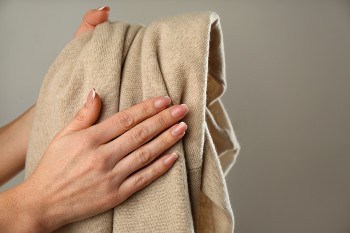 Cashmere is usually softer than alpaca. One of the main things we look for in both of these luxury materials is the ultimate softness. Most of the time, cashmere has finer fibers than alpaca.
Cashmere is usually softer than alpaca. One of the main things we look for in both of these luxury materials is the ultimate softness. Most of the time, cashmere has finer fibers than alpaca.
Just like with thread count in bedsheets, more yarns woven together more densely create greater softness.
Yarn sellers measure the thickness of yarn in something called microns. A micron measures one millionth of a meter. Obviously, you would need a microscope to measure the fibers!
High-quality cashmere usually measures between 14-16 microns. In contrast, baby alpaca fibers typically measure at about 19-21 microns. Keep in mind, though, that the very finest Merino sheep wool measures at least 24 microns!
Softness varies depending on the quality of wool used in a product and the construction process used to create the material. Sometimes baby alpaca fibers are just as thin and soft as cashmere fibers. Most of the time, though, cashmere wins the softness contest.
Durability
While both types of yarn will last many, many years with proper care, alpaca is a bit more durable because it also resists pilling.
The length and smoothness of alpaca hairs allow them to twist into strong yarns that don’t break easily. This means you won’t see little pilling bobbles on top of your sweater very often!
Alpaca fibers also have high tensile strength, making the yarns stronger and longer-lasting.
Cashmere, on the other hand, does suffer from pilling. It has shorter, finer fibers that can break, fall out of the yarn, or pill fairly easily. Hand-combed fleece will not pill as easily as cheaper cashmere fleece cut away from the goats, though.
The cool thing about both of these types of wool is that you can safely invest in them, expecting them to last for many years. Both materials do best if hand washed in gentle detergent and dried flat on a towel or drying rack.
Water Retention
Believe it or not, alpaca wool has a great water retention rate!
You might not often think about how well wool handles wet weather. After all, no one wants to walk around in a wet sweater! Though, outdoors people often wear wool because it has excellent moisture-wicking abilities.
Both cashmere and alpaca, like most kinds of wool, provide moisture-wicking, meaning that the material transfers moisture from one side to the other side, where it can evaporate into the air.
Alpaca goes beyond this, though. It also offers a great moisture retention rate! It holds onto only about 8% of the moisture it absorbs, while most other kinds of wool retain around 20% of the moisture they absorb.
This ability comes from the smooth scales on the outside of alpaca fiber. Alpaca isn’t quite waterproof, but it will dry fast when it gets wet.
Cost
 Most of the time, you can expect cashmere to cost a bit more than alpaca. This difference mostly stems from the fact that alpaca wool remains less well known, while cashmere has symbolized luxury for a long time.
Most of the time, you can expect cashmere to cost a bit more than alpaca. This difference mostly stems from the fact that alpaca wool remains less well known, while cashmere has symbolized luxury for a long time.
That said, you will see a wide range in prices for both kinds of wool depending on the quality of the product. Mainstream retailers selling cashmere sweaters almost certainly use a blended material that does not contain 100% pure cashmere. This lowers the price significantly.
You can also find alpaca sweaters made with super high-quality fibers hand-combed in Peru, and these may well skyrocket into the stratospheric prices typically reserved for cashmere.
The bottom line is that both types of yarn, in their pure form, are luxury items. You will need to put down hundreds or thousands of dollars to get your hands on an alpaca or cashmere product!
Sustainability
Alpaca wool production is much more sustainable than cashmere production. This is partially due to the difference in animal populations, as there are only about four million alpacas in the whole world. Because of cashmere’s greater popularity, Hircus goats have more than triple that population.
On top of this, alpacas have uniquely eco-friendly characteristics. They have soft feet that don’t erode the soil. They don’t yank up their roots as they eat–they just nibble the leaves off. They also have a three-stomach system like cows, allowing them to exist without much food and water in a harsh environment.
That said, both alpaca and cashmere wool usually gets shipped around the globe to reach its consumers, which is far less eco-friendly.
Cashmere production does not live in such harmony with its environment. Hundreds of years ago, herders maintained small goat herds easily supported by the grasslands of wide-open spaces like much of Mongolia at that time. Unfortunately, that balance between man and nature disappeared when cashmere wool became popular around the world.
Today, Hircus goats are often named an invasive and damaging species because they destroy the grasslands they feed off. Goat hooves dig up the soil, allowing it to erode. Plus, goats nose out and eat the roots of plants, preventing them from regrowing.
All of this means that cashmere production is turning portions of the world into a desert. If you’re looking for an eco-friendly luxury material, you will want to choose alpaca over cashmere!
Common Uses

The most popular use for both kinds of wool is in luxury sweaters. You can also find a wide selection of alpaca and cashmere socks, blankets, and throws. And then, of course, there are the pashmina shawls, bathrobes, and even coats that feature these incredibly soft kinds of wool!
To make sure you’re getting your money’s worth with these products, you can always check the label and description of a product to determine its purity. You can also seek out designers known for using cashmere or alpaca in their clothing lines.
Of course, if you want hand-made, totally pure cashmere or alpaca, you could also visit native weavers and textile artists in places like Peru and Mongolia!
Pros and Cons of Alpaca
Let’s sum up with a quick look at the advantages and disadvantages of alpaca wool. It is:
- One of the warmest kinds of wool in the world.
- Very durable wool that has high tensile strength and does not pill easily.
- Softer than Merino yarn, but not as soft as cashmere.
- Much more sustainable than cashmere.
- That said, like many rare items, it does have to travel a long way to get to consumers, which is less eco-friendly.
- On the downside, a much smaller alpaca population globally makes this material super rare.
Pros and Cons of Cashmere
And here is a quick look at the advantages and disadvantages of cashmere. It is:
- Often called the softest wool in the world, with the finest fibers of any kind of wool.
- Very warm and also light enough to wear in varying temperatures.
- More expensive than alpaca and made popular as the ultimate luxury wool.
- Does not use sustainable production methods.
- Less durable than alpaca and prone to pilling.
Popular Products Made of Alpaca and Cashmere
You can buy cashmere clothing from top brands like Brunello, Neiman Marcus, and Cuyana. While Alpaca remains slightly less well known, several big brands market this specialty wool as well! Look for products made by Everlane, Plum of London, and Peruvian Connection.
Check out these products to get an idea of the wide range of items available!
Cashmere Boutique 100% Pure Cashmere Queen Blanket
 This luxurious 90” X 90” cashmere blanket offers a light, silky, breathable surface that will drape elegantly over any furniture.
This luxurious 90” X 90” cashmere blanket offers a light, silky, breathable surface that will drape elegantly over any furniture.
Though it comes with a hefty price tag, every inch of this soft throw contains 100% pure cashmere woven in 4 ply. The rich vanilla coloring will also pair well with your bedroom, living room, or family room decor.
Plus, the Cashmere Boutique has forty years of artisanal craftsmanship behind them. They make all of their blankets in Nepal and Mongolia. You can count on the opulent warmth and softness of this blanket!
Invisible World Women’s Baby Alpaca Sweater
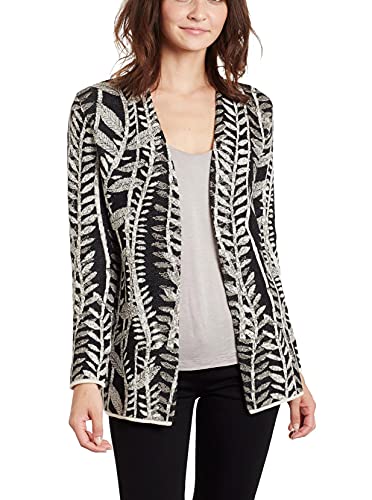 Handcrafted in Bolivia, these thigh-length cardigans offer a light, soft texture perfect for both spring and fall. Every sweater features 100% pure baby alpaca wool that does not contain any blended fibers.
Handcrafted in Bolivia, these thigh-length cardigans offer a light, soft texture perfect for both spring and fall. Every sweater features 100% pure baby alpaca wool that does not contain any blended fibers.
As one of the softest kinds of wool, baby alpaca will offer you so much silky warmth you will feel like your sweater is giving you a hug!
The beautiful leaf-and-vine design makes this sweater perfect for both the office and a fun event. As an added benefit, this cozy, classy cardigan will not pill over time because of alpaca wool’s long fibers!
Alpaca or Cashmere Socks
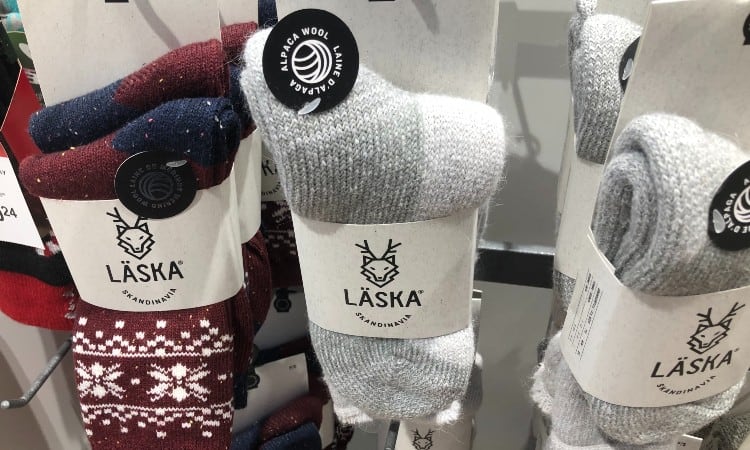
In one sense, you really can’t go wrong with either cashmere or alpaca socks, as both will keep your toes encased in silky comfort! That said, each wool has its advantages for footwear.
Alpaca socks, slippers, or bed socks give you warmth and softness but also reliable durability. You can walk around the house with these guys or even go hiking, and you won’t have to worry about instantly wearing holes through the wool. You can also wash them easily without any pilling.
Now, you do want to check the product description to make sure you’re buying pure alpaca wool. That will ensure a sleek, soft texture in your socks!
Cashmere socks have the advantage of fine, lightweight yarns that will make you feel like your feet are wrapped in air. Cashmere socks work perfectly for lazing around the house, cuddling with a special person, or sliding onto your baby’s tiny, sensitive feet.
On the downside, cashmere will wear out and pill if you walk around a lot in these socks. These socks will serve you better for casual wear.
Merino Wool vs Alpaca vs Cashmere
In comparison with cashmere and alpaca, merino wool comes in a close third as quality, luxury wool. How does it line up in terms of the key qualities you looked at for alpaca and cashmere?
Well, merino comes from sheep. Its fibers do provide excellent softness and warmth, no question about it! That said, each fiber has a slightly more prickly quality to it that can lead to itchiness on sensitive skin.
Merino fiber measures at about the same micron level as alpaca fiber, meaning that cashmere has much finer, lighter fibers.
Plus, while merino is super-warm, it lacks the hollow core of alpaca and thus doesn’t provide quite as much insulation.
Then again, merino clothing costs quite a bit less as well, so if you need a slightly more affordable luxury item, you might want to check out this kind of wool!
If you suffer from skin allergies, you might want to keep in mind that merino wool contains lanolin, which can cause an allergic reaction. Both cashmere and alpaca are considered hypoallergenic because they are lanolin-free.
Conclusion
Both alpaca and cashmere wool provides incredible softness, warmth, and comfort. Typically, cashmere ranks as the softest of the wools, while alpaca reigns as the warmest. As luxury products, they cost far more than most other kinds of wool.
Alpaca may soon move into the forefront of the luxury wool competition, though, because it is so much more sustainable than cashmere. It also has special hardiness and durability unique to its very long fibers.
Are you in the market for alpaca or cashmere clothing? Which wool do you prefer? Leave a comment below to let us know!